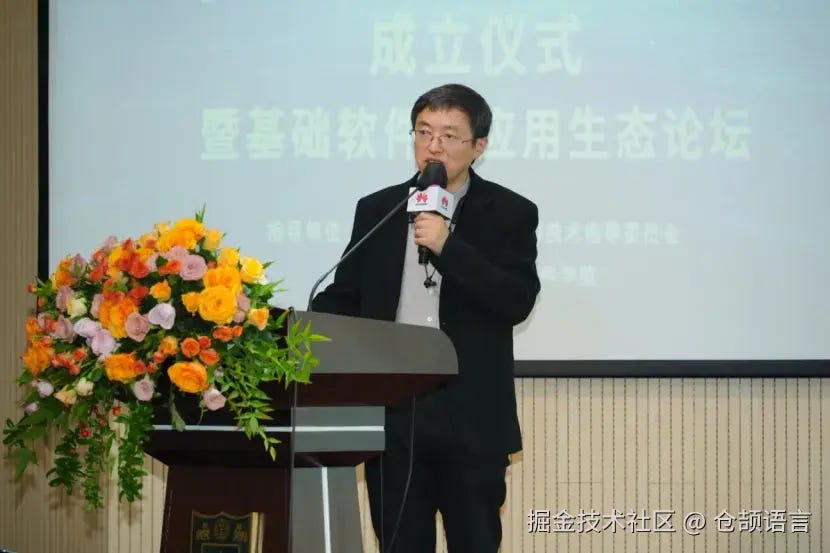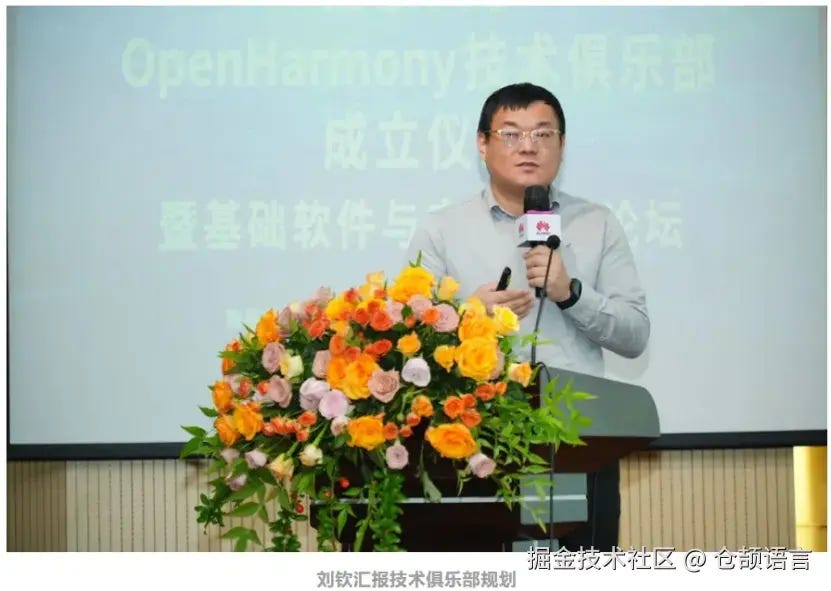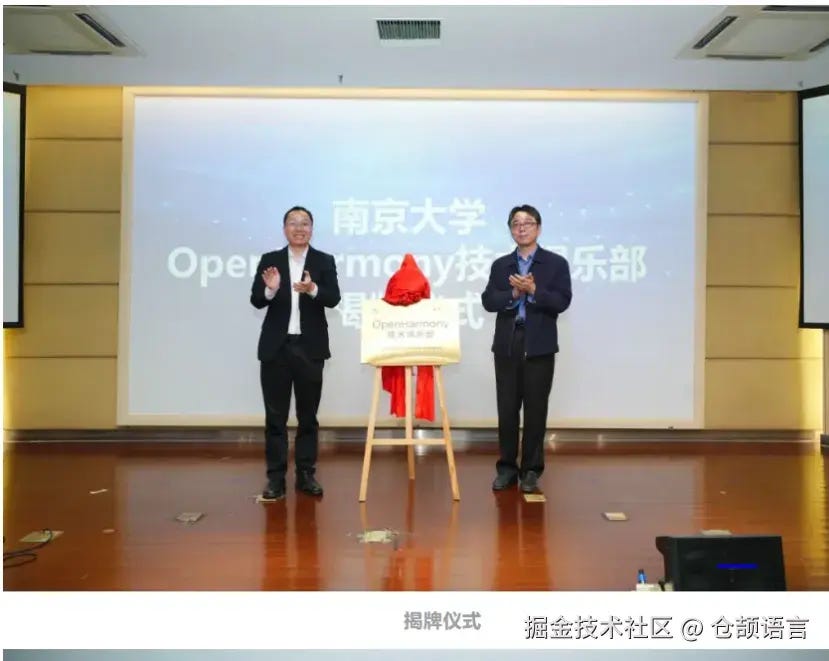Nanjing University OpenHarmony Technology Club was officially unveiled Cangjie programming language leads ecological innovation
On April 24, 2025, the "Inaugural Meeting of Nanjing University OpenHarmony Technology Club and Basic Software and Ecological Application Forum" jointly organized by the Technical Steering Committee
On April 24, 2025, the "Inaugural Meeting of Nanjing University OpenHarmony Technology Club and Basic Software and Ecological Application Forum" jointly organized by the Technical Steering Committee of the OpenAtom OpenHarmony (hereinafter referred to as "OpenHarmony") project group and the School of Software of Nanjing University was held at the Xianlin Campus of Nanjing University. More than 200 representatives, including Lu Yanqing, Vice President of Nanjing University, and Chen Haibo, Chairman of OpenHarmony Technical Steering Committee, attended the conference, which focused on the technological breakthrough and integration of industry, education and research in Cangjie, a domestic independent programming language. This conference not only marks the further deepening of the industry-university-research cooperation between Nanjing University and OpenHarmony, but also highlights the outstanding value of the domestic independent innovation technology - Cangjie programming language in the era of intelligent connection of all things.
Cangjie Language: A key technological breakthrough in the OpenHarmony ecosystem
In the technical forum of the conference, Feng Xinyu, director of OpenHarmony programming language TSG and professor of Nanjing University, delivered a technical report entitled "A New Generation of Programming Language for All-Scenario Applications - Cangjie". The technical advantages and ecological planning of Cangjie language are systematically explained:
1. Technical advantages
Efficient development and performance balance: Static typing and automatic memory management are supported, and real-time response on mobile devices is ensured through concurrent garbage collection and a lightweight thread model.
Full-stack optimization: The language, compiler, and runtime are co-designed, and the performance is significantly improved compared with similar languages, meeting the needs of smooth interaction of HarmonyOS native applications.
Multi-paradigm fusion: Integrates functional and object-oriented features, and has built-in metaprogramming capabilities to support rapid DSL development in scenarios such as declarative UI and intelligent agent.
2. Ecological planning
At present, the Cangjie language has been implemented in scenarios such as device-side HarmonyOS native applications and cloud-side microservices, and has built an IDE plug-in ecosystem to achieve intelligent programming coordination with large models.
Cangjie plans to promote the construction of developer ecology through the "Cangjie Cup" competition, and carry out joint research on the cutting-edge technology of compilers with major universities to accelerate the maturity of the independent programming language system.
Technology Club: The practice base of Cangjie language
Liu Qin, executive director of the OpenHarmony Technology Club of Nanjing University, clearly mentioned in the plan that the club will focus on the following actions around the Cangjie language:
Source Code Study and Project Incubation: Set up a special research group for Cangjie language, combine enterprise-level projects and academic resources to promote its technical iteration.
Talent training: Through summer training camps and open source competitions (such as "Cangjie Cup"), we will cultivate compound talents with open source system research and development capabilities.
Ecosystem co-construction: Collaborate with Huawei and other enterprises to apply the Cangjie language to cutting-edge fields such as RISC-V and AI test frameworks.
Industry, university and research work together to create a new highland of domestic technology
Lu Yanqing, Vice President of Nanjing University, and Chen Haibo, Chairman of the OpenHarmony Technical Steering Committee, both emphasized that the establishment of the club is an important step to promote the innovation of domestic basic software. Relying on the advantages of multidisciplinary interdisciplinarity, Nanjing University will break through the "bottleneck" problem in key OpenHarmony technologies (such as Cangjie language and distributed architecture), and help China occupy a dominant position in the global operating system field.
Chen Haibo and Wu Gangshan jointly unveiled the establishment of the OpenHarmony Technology Club of Nanjing University. Subsequently, Chen Haibo awarded Liu Qin a plaque.
OpenHarmony is an open source project incubated and operated by the OpenAtom Foundation, with the goal of building a framework and platform for the operating system of smart terminal devices in an open-source manner for the all-scenario, full-connected, and all-intelligent era, so as to promote the prosperity and development of the Internet of Everything industry. Over the past three years since OpenHarmony was open sourced, the community has grown rapidly, with more than 70 co-builders and more than 8,200 co-builders contributing more than 120 million lines of code. Up to now, under the leadership of the Technical Steering Committee of the OpenHarmony Project Group, the OpenHarmony community has jointly established OpenHarmony Technology Clubs or Developer Associations with more than 100 leading universities in China, by attracting teachers and students to participate in technology research and focusing on the cultivation of innovative talents, continuously deepening industry-university-research collaboration, and working with all sectors of society to promote the technological development and community prosperity of OpenHarmony.
Original source: 南京大学OpenHarmony技术俱乐部正式揭牌 仓颉编程语言引领生态创新2025年4月24日,南京大学OpenHarm - 掘金








